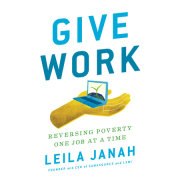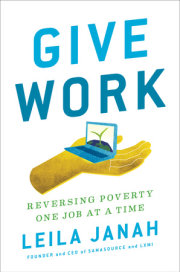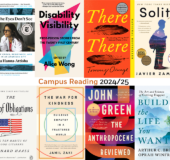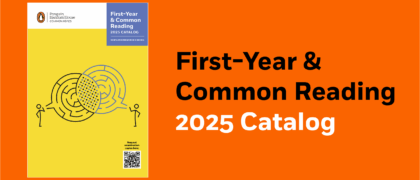Chapter One
From the Ground Up
When my brother and I were young and we’d ask my fatherfor an allowance or spending money, he would raise his voice to oratoricalheights and recite a line by the Roman poet Juvenal: “My children, ‘luxury ismore ruthless than war.’” It was his way of teaching us the concept of jugaad,which is a Hindi word that means “resourcefulness.” He wanted us to be strongand scrappy. It might also have been his way of avoiding having to spell outthe truth, which was that he probably had little money to give.
The first stepping-stones in my path to Samasource andthis book were laid long ago, before I was even born. My parents emigrated fromBombay to Buffalo, New York, in 1978. The Rust Belt city was a brutaladjustment for this artistic, worldly couple; my mother’s ancestral home inKolkata was such a hub for the Indian literati it had been dubbed “an incubatorof souls.” And then there was the weather. In the winter of 1981–82, ninemonths before I was born, Buffalo recorded 112 inches of snow. A few yearslater, desperate to escape the region’s frigid winters, my tropical parentsfollowed the sun to Arizona, moving multiple times before finally settling thefour of us—by this time my brother, Ved, had been born—in Southern California.Although we were never poor by most standards, my family was incredibly moneyconscious. We shopped exclusively at discount and thrift stores, we rarely ateout, and our tightly budgeted vacations took place in campgrounds and nationalparks. Our biggest expense was our home, which my parents rented in aneighborhood beyond what they could comfortably afford to ensure that theirchildren attended good public schools. As little as we had, we made do. My onlyinkling of what true poverty might look like came from an anecdote my mothershared when her children didn’t finish their plates, the one about the time shethrew a piece of bread onto her Kolkata street for the local stray dog, and astreet kid rushed over, pushed the animal away, and gobbled it up.
That story often made me wonder, why was I so lucky whenthere were so many children in the world who were not? Along with the words ofRoman poets, my father also passed down to his children a deep sense of socialjustice, a legacy, perhaps, of his Jesuit education in the Catholic schools ofJamshedpur, about 140 miles west of Kolkata. We were expected to notice theinequities in the world and try to make things better. I took the lessons toheart and did what I could. In middle school I joined my local chapter of theAmerican Civil Liberties Union (ACLU). When I was about fifteen I won firstplace at the state science fair for a marine microbiology project thataddressed the issue of world hunger by testing the possibility of growing foodfrom chemosynthetic bacteria (bacteria that don’t need sunlight to createenergy). I started my high school’s chapter of Amnesty International. As I gotolder, however, I came to the conclusion that merely making things better wasnot sufficient. There was an underlying problem fueling most of the injusticesthese organizations were created to address, a root cause that needed to befixed. Fortunately, I come from a long line of passionate, determined peoplewho showed me through example that every individual has the power to instigatechange. In fact, if my maternal great-grandfather hadn’t believed it, thatstreet child could easily have been me.
A Family Rises
My great-grandfather’s name was Sharat Chandra Janah, andhe did something exceedingly rare for a boy from a low-caste Indian family: herose. Born in a poor fishing village in West Bengal, his intelligence attractedthe attention of the nuns in his Catholic school. With their encouragement hewent on to university and law school, becoming one of the top trial lawyers ofKolkata. Yet he never forgot how he had been forced to sit at a separate tablefrom his schoolmates because of his low caste, and he always chafed against anysystem that barred people from opportunity by virtue of their station in life.He made it a point to take pro bono cases of tribal people who were beingdiscriminated against and had no prayer of finding representation. My motherhad memories of strangers staying at the family compound for days while theywaited for their court appointments.
Her parents met because, like my great-grandfather, mygrandmother Christiane, a beautiful Belgian redhead, took an opportunity tochange her destiny. I know this story because Christiane documented her amazingjourney in a book called Le tour du monde avec cinq dollars, which translatesto Around the World with Five Dollars. Her family, the Zeebroeks, fled Belgiumin 1940 to escape the Nazi occupation. When she was twenty-five years old,craving adventure and fed up with the stifling secretarial job she had landedin Paris after finishing university, Christiane joined a group of friendsplanning to travel the world spreading a postwar message of peace. They calledthemselves Les Messagers (The Messengers). Starting out with nothing more thanfive dollars, some packs, and a few tents, the four boys and two girlshitchhiked across Europe down to Italy. From there, the merry band crossed theMediterranean to North Africa and continued across the Middle East, untilfinally arriving in Kolkata.
My great-uncle Sunil, my grandfather’s brother, was aprominent Bengali photographer who was known for his coverage of the Indianindependence movement and the human rights abuses committed by the Britishduring that period. He happened to attend one of Christiane’s lectures at theUniversity of Kolkata, and, intrigued by the group’s story, he invited them tostay at the family home. And so Les Messagers trooped over to 57 RashbehariAvenue, which was also the headquarters for Chandra Janah’s law practice, andset up their tents on the terrace. That evening, as legend has it, mygrandfather, Ashis, was coming up to see what all the fun was about as mygrandmother was coming down the stairs. He saw her standing above him with themoonlight illuminating her red hair. He fell madly in love. She wasn’t so sure.Shortly afterward she continued on her journey, crisscrossing Asia andtraveling by boat to the United States before returning to Europe. Hearing thatshe was back in Paris, my grandfather tracked Christiane down and enrolled atthe Sorbonne, taking the last option they had left, a ceramics course, just sohe could be near her. She must have come around because they married in Pariswithin the year, and my mother was born a few years later at her mother’sfamily home in Nice.
Unsurprisingly, Christiane did not settle into typicaldomestic married life. Instead, she and my grandfather returned to Kolkata andopened India’s first art ceramics studio. Though she lived in a city famous inthe West for Mother Teresa and child prostitutes, my mother was educated atprivate schools and raised in a rare sliver of Indian society, middle-classintellectuals who were neither poor nor particularly rich. She grew up steepedin an incredible melting pot of artists and cultural leaders whom her parentsfrequently socialized with and entertained. She was also often left alone tofend for herself.
Awkward and isolated at school as well—biracial studentswere still unusual, and the strange stories she told of things she’d seen inFrance as a child alienated her from her classmates—she turned inward, findingsolace in caring for animals. In a city plagued with acute poverty, strays andinjured creatures were the lowest priority. Even as a young girl my mother, whonever studied anatomy or medicine, became known for her uncanny healing powers.With no animal shelters in Kolkata, people would leave wounded animals on thedoorstep of 57 Rashbehari. She mended a squirrel’s broken bone, and after thathe never left her side, happily riding around in her pocket on the bus.
My mother found it hard to warm up to people, but she wasincredible with animals. My brother and I would groan every time she’d pullover to see if she could resuscitate what looked to us like roadkill, chalkingup her behavior as just one more reason our odd family would never fit into theSouthern California suburbs. Yet through her grace toward wounded creatures shegave us a powerful connection to nature and a sense of duty toward thesuffering. In her own way, too, she showed me that individuals can make adifference even when situations appear hopeless.
My father, Sahadev Chirayath, grew up in a middle-classfamily from Kerala, where generations of men in his family had worked for TataSteel in Jamshedpur, the Pittsburgh of South Asia. Around the age of nineteen,my dad transferred to Bombay to finish his studies at that branch of the IndianInstitute for Technology after narrowly escaping expulsion from the IIT Kanpurcampus for staging a play in the nude on a rooftop (it was after all the1970s). A polymath who loved poetry, spoke multiple Indian languages, playedclassical Indian music, and loved James Joyce, he was not your typicalstructural engineer. It was in Bombay where he met my mother, who was pursuinga degree in English literature. She was eighteen.
Like thousands of other young, educated Indian graduatesin the mid-1970s, my father realized his future was abroad. In the 1970s and1980s, India’s economy was still mostly agricultural, and there just weren’tenough jobs around to absorb the waves of newly minted technical talent. So myfather moved to the United States after finding work as a civil engineer inBuffalo, New York. A few months later, he proposed to my mother in a letter.She accepted with a two-word telegram—“I will.” They were married shortlyafterward in a civil ceremony in Cleveland, Ohio, where my father’s brother wasa professor.
Like most immigrants, they came to the United States withlittle more than the clothes on their backs and the skills in their heads andhands, which, in my father’s case, were in great demand. My mother was lesslucky. An English literature degree from India would not be particularlymarketable in the United States now, much less in 1977 Buffalo. She was sotalented and smart—she could recite long passages from Macbeth from memory—yetthe only job she could get was chopping onions at the local Wendy’s near theirapartment in Grand Island, a suburb just south of Niagara Falls. To this day, Isee her in the many immigrant cab drivers, restaurant workers, and otherlow-wage employees I encounter who were doctors, lawyers, and white-collar jobholders in other countries, but whose educational or professional credentialsaren’t recognized to allow them to practice here in the States. As if thatweren’t demoralizing enough, neighbors would remark in amazement, “Wow, youspeak such good English!” and she would have to explain again and again thatEnglish was the official language of India and that she had been speaking it,along with several other languages, since she could talk. Some people saiduglier things, like “Go back to India,” or asked her, “Did you live withmonkeys?” They had no concept of an intellectual class in India. This is thecore challenge that Nigerian writer Chimamanda Adichie refers to in her TEDTalk on the “danger of a single story”—so often, immigrants in America aregiven a single narrative: they’re either desperate and poor or lazy andungrateful. Life was not easy, and the financial pressure and social isolationwas hard on my parents’ marriage. But they did their best. I was born fouryears after they arrived.
After we moved to Arizona my mother started fresh,enrolling at Pima Community College in Tucson and taking computer sciencecourses, which she thought would be more bankable than her English degree. Shealso ran a plant nursery and later got a job at United Airlines as acontractor. As she was able to excel, my mother’s confidence and sense of selfreturned. Upon receiving her computer degree she started working in IT andlearned how to write BASIC software. My father continued his engineeringcareer.
When I was seven, my dad got a job in SouthernCalifornia. My parents scraped together everything they had to move us into aneighborhood zoned to one of the highest-ranked schools in the area. Bookishand passionate about science—one of my favorite experiments was setting fire tothings in the backyard to see which items would burn the fastest—I startedschool with enthusiasm. But by the third grade it became clear that there wererules for survival and fitting in, and I didn’t know them. The school wasaffluent, and the kids were merciless. This was long before the days of MindyKaling and Quantico’s Priyanka Chopra, and South Asians were invisible in mainstreamculture. I was the only person of color in my grade and I felt it. My ashy skinand hairy legs, not to mention my clothes, handmade by my mother or bought atthe Pic ’n Save, made me an easy target for the mean girls in the Guess sweatersets. When I’d get on my bike to go home, they would surround me, blocking myway and jeering at me in their own form of pig Latin. I retreated into books.Things got marginally better once I moved to a less affluent school, but still,I’d have done anything to trade in my straight black hair for a cascade ofblond permed curls and rename myself Rebecca.
I was pretty miserable until high school, when I wasaccepted into a math and science magnet program called CAMS, the CaliforniaAcademy of Math and Science. Drawing from ten different school districts aroundthe L.A. area, its mission is to expose more women and minorities to the STEMfields. Finally, I had found all the other Southern California nerdy misfitsfrom lower-income backgrounds. The universe opened up for me.
An Introduction to Work
Around this time my home life became extremely difficultas my parents’ marriage, frayed since the beginning, began to seriouslyunravel. School and work became my escapes. I joined every extracurricularactivity I could, falling in love with dance, and did odd jobs around theneighborhood. I launched a babysitting business. Fanned by my father’s emphasison jugaad, I learned early that if I wanted something badly enough, I was goingto have to figure out how to earn it myself. But work also helped me understandwhat I was good at. And unlike school, I got paid on the basis of how well Iovercame challenges. That was a real revelation, that I brought value to theworld that was worth someone else’s money. It gave me confidence, which Isorely needed when things were so unstable at home.
Copyright © 2017 by Leila Janah. All rights reserved. No part of this excerpt may be reproduced or reprinted without permission in writing from the publisher.








